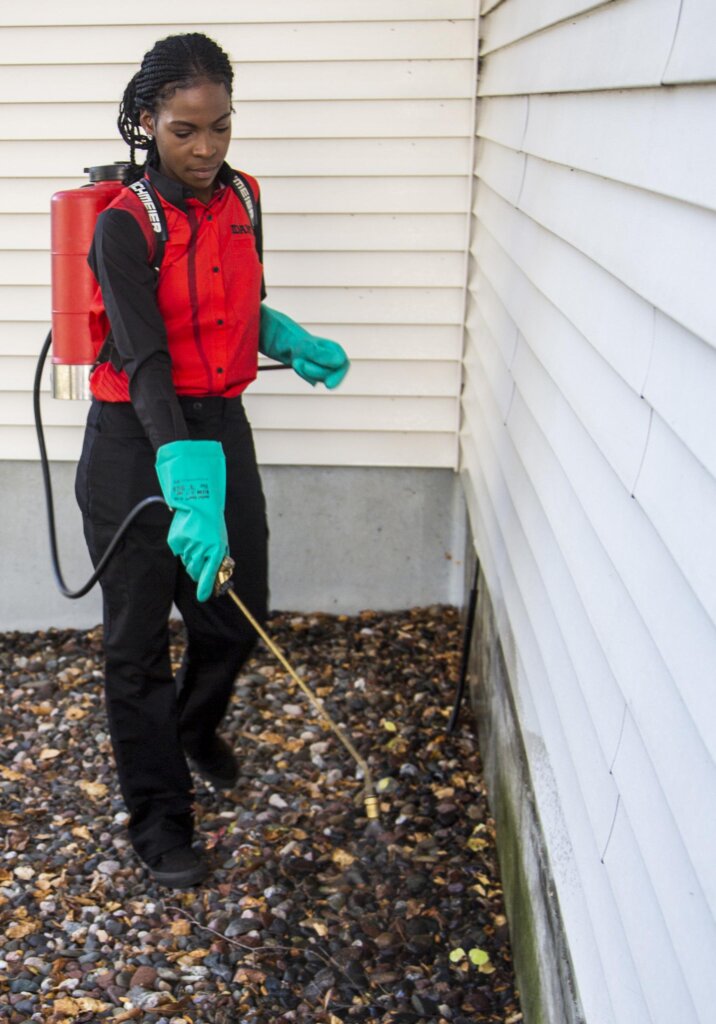Bed Insect Treatment Failure: Contrasting Chemical Vs. Non-Chemical Solutions
In the realm of pest control, specifically when handling the consistent issue of bed bugs, the option in between chemical and non-chemical treatment options can be a pivotal one. Both approaches use distinct benefits and drawbacks, affecting elements such as efficiency, safety considerations, and overall cost. By analyzing the nuanced information of each approach, a more clear understanding of which path to pursue in attending to a bed pest problem can be achieved.
Effectiveness of Chemical Therapies
Chemical therapies for bed pest invasions have been extensively recognized for their fast and potent efficiency in eliminating these parasites. When taking into consideration the performance of chemical treatments, it is essential to recognize that they can provide a comprehensive and quick option to a bed pest problem. Professional pest control experts frequently rely upon pesticides to target bed bugs at various stages of their life process, including eggs, grownups, and nymphs. These chemicals normally function by interrupting the bed insects' nerves, causing paralysis and eventual fatality.
Additionally, chemical therapies have the advantage of supplying residual effects, meaning that they can remain to remove bed insects even after the preliminary application. This recurring action is especially beneficial in combating any kind of prospective re-infestations. Additionally, the rapid activity of chemical treatments can bring relief to individuals dealing with serious bed insect invasions, enabling them to gain back control of their living spaces promptly.
Security Problems With Chemical Solutions
One critical aspect that calls for careful consideration when using chemical solutions for bed pest therapy is guaranteeing the safety and security of residents and the environment. Exposure to particular chemicals made use of in bed pest therapies can lead to breathing concerns, skin inflammation, or various other unfavorable reactions, especially in individuals with pre-existing problems or level of sensitivities.
Additionally, the ecological influence of chemical remedies is one more significant consideration. Some chemicals used in bed pest therapies might be unsafe to helpful pests, wild animals, and communities if they seep into the soil or water systems. It is vital to make use of chemical therapies sensibly, following safety guidelines, and considering less toxic options to alleviate these dangers and make sure the risk-free and reliable administration of bed bug infestations.
Benefits of Non-Chemical Techniques
Considering the potential safety concerns and ecological impact connected with chemical options for bed insect treatment, discovering non-chemical approaches provides an appealing alternative with numerous unique benefits. Non-chemical therapies are eco friendly, as they do not contribute to air or water air pollution, making them a sustainable option for parasite control.
Additionally, non-chemical solutions can be effective in targeting bed bugs, including hard-to-reach areas where chemical therapies might not penetrate - A1 bed bug exterminator charlotte. Techniques such as heat therapy, vacuuming, steam cleansing, and cushion coverings give detailed elimination without the use of harmful chemicals.
Limitations of Non-Chemical Treatments

In addition, non-chemical treatments typically require multiple applications to achieve effective obliteration. This can be lengthy and may not always guarantee total elimination of all bed pests and their eggs, particularly in hidden or hard-to-reach areas.
In addition, the success of non-chemical therapies heavily depends on correct application and thoroughness, which can be testing for individuals without expert knowledge. Insufficient application of non-chemical techniques may result in insufficient elimination, leading to relentless invasions and the need for additional treatments.
Therefore, while non-chemical therapies have their benefits, it is important to acknowledge these restrictions and consider them when identifying one of the most efficient technique for taking care of bed bug problems.
Price Contrast: Chemical Vs. Non-Chemical Options
Offered the constraints related to non-chemical therapies, an important aspect to evaluate in the context of bed insect management is the price contrast between chemical and non-chemical alternatives. Chemical treatments usually include the application of insecticides by specialists, which can range from $250 to $900 per space, depending on the extent of the infestation and the dimension of the area to be dealt with. In contrast, non-chemical treatments like warmth treatment or vapor can be extra pricey, with costs varying from $1,000 to $6,000 for an entire home. While the first cost of chemical treatments may seem lower, multiple therapies might be needed to completely eradicate the invasion, potentially enhancing the general price. On the other hand, non-chemical options may provide a more eco-friendly and lasting service, although they can be cost-prohibitive for some people. Eventually, when considering the expense of bed bug therapy alternatives, it is necessary to consider the in advance expenses versus the effectiveness and long-lasting sustainability of the selected technique.
Final Thought

Considering the prospective safety and security concerns and ecological influence connected with chemical remedies for bed pest treatment, checking out non-chemical approaches provides a promising choice with several distinct advantages.Offered the limitations linked with non-chemical therapies, a crucial aspect to examine in the context of bed bug administration is the cost comparison in between chemical and non-chemical options. In comparison, non-chemical therapies like warm therapy or heavy steam can insect control companies be a lot more pricey, with costs varying from $1,000 to $6,000 for a whole home. While the first price of chemical therapies might seem lower, numerous treatments might be called for to fully eradicate the invasion, potentially enhancing the total price.In conclusion, when comparing chemical and non-chemical bed pest therapy alternatives, it is important to take into consideration performance, safety, advantages, constraints, and expense.
Comments on “A1 Charlotte Pest Control Companies - Your Regional Pest Professionals”